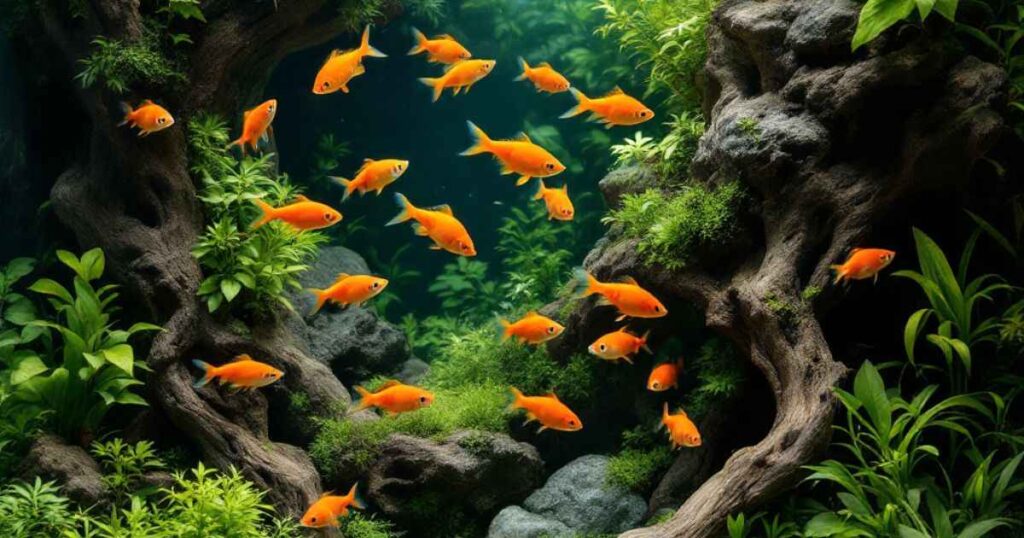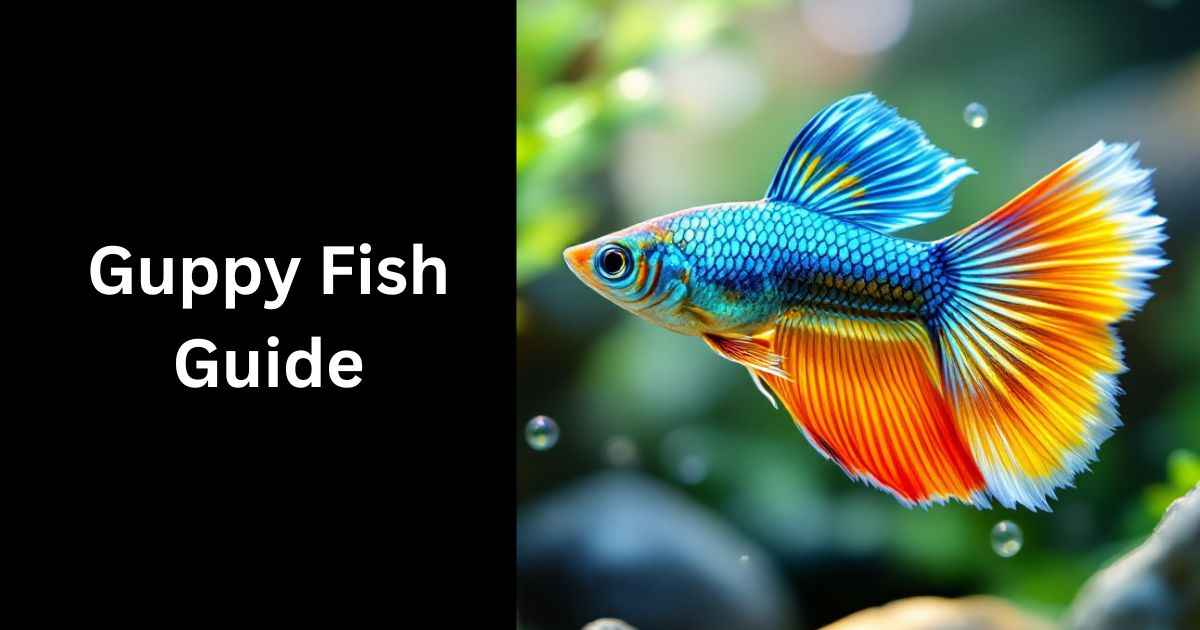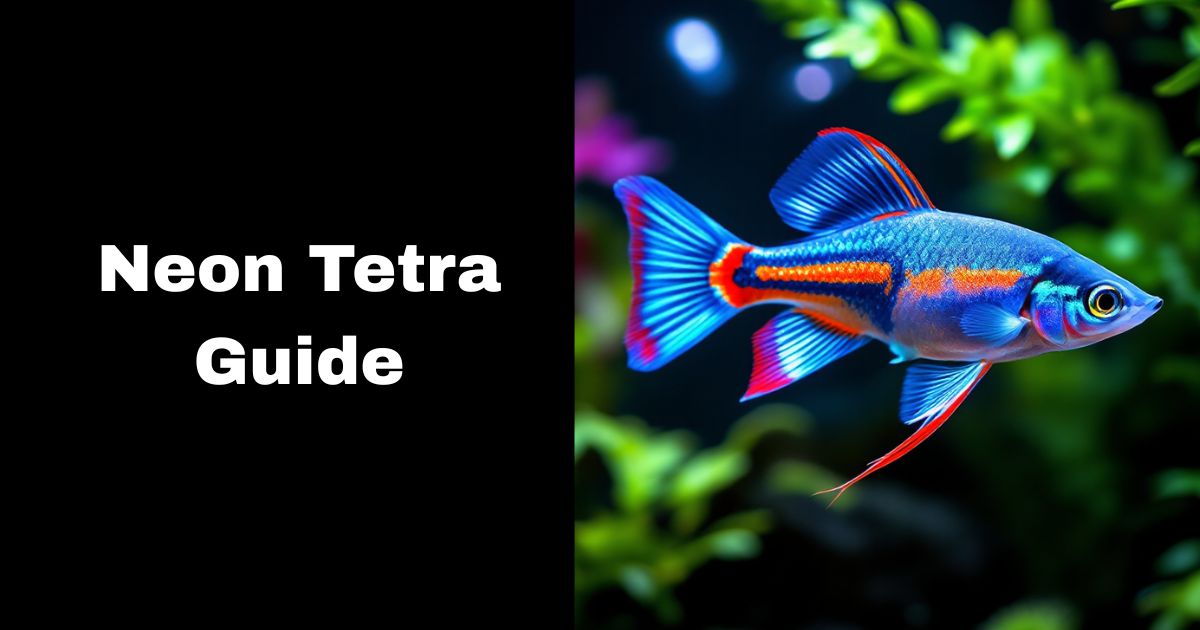The Ember Tetra is a tiny, fiery gem of the freshwater aquarium world. Known for their vibrant orange hues and peaceful nature, these fish are a favorite among aquarists, from beginners to seasoned hobbyists. But what makes them so special?
In this article, we’ll dive into everything you need to know about Ember Tetras—their size, lifespan, ideal tank mates, and how to care for them. Whether you’re setting up your first aquarium or looking to add a pop of color to your existing tank, this guide will help you create the perfect environment for these dazzling fish.
What is an Ember Tetra?
The Ember Tetra (Hyphessobrycon Amandae) is a small, freshwater fish native to the slow-moving waters of the Araguaia River basin in Brazil. These fish are part of the Characidae family, which includes other popular species like Neon Tetras and Black Skirt Tetras.
What sets the Ember Tetra apart is its striking orange coloration, which resembles a flickering flame, making it a standout in any aquarium.
These fish are incredibly peaceful and thrive in community tanks, making them a great choice for aquarists of all experience levels. Their small size and schooling behavior also make them ideal for nano aquariums, where they can display their natural tendencies in a compact space.
Ember Tetra Facts & Overview
| Feature | Description |
|---|---|
| Scientific Name | Hyphessobrycon Amandae |
| Common Names | Ember Tetra, Dwarf Tetra |
| Family | Characidae |
| Origin | Brazil, specifically the Araguaia River Basin |
| Lifespan | 2-4 years |
| Size | Up to 1 inch (2.5 cm) |
| Diet | Omnivorous – flakes, micro-pellets, live or frozen foods (e.g., daphnia) |
| Common Colors | Vibrant orange to reddish hues |
| Care Level | Easy |
| Temperament | Peaceful, schooling fish |
| Lighting | Moderate to low |
| Habitat | Freshwater |
| Minimum Tank Size | 10 gallons (38 liters) |
| Tank Setup | Planted tank with driftwood, hiding spots, and soft substrate |
| Tank Placement | Middle to top of the tank |
| Temperature Range | 72-82°F (22-28°C) |
| pH Range | 5.5-7.0 |
| Salinity | 0 ppt (strictly freshwater) |
| Alkalinity | 1-3 dKH (low to moderate) |
| Calcium Level | ~20-30 ppm |
| Magnesium Level | ~5-10 ppm |
| Propagation | Egg-layer; breeding requires soft, acidic water and dim lighting |
Ember Tetra Size and Appearance
How Big Do Ember Tetras Get?
The Ember Tetra is a tiny fish, but don’t let its size fool you—it’s packed with personality! On average, these fish grow to about 0.8 to 1 inch in length, making them one of the smallest freshwater fish commonly kept in aquariums. Their petite size makes them ideal for nano tanks or smaller aquariums, where they can thrive in groups without taking up much space.
Despite their small stature, Ember Tetras are active swimmers and love to school together. This behavior not only enhances their visual appeal but also helps them feel safe and secure in their environment. If you’re looking for a fish that’s small yet lively, the Ember Tetra is a perfect choice.
Coloration and Unique Features
One of the most striking features of the Ember Tetra is its vibrant, flame-like orange coloration. Their bodies shimmer with a fiery glow, which becomes even more pronounced under proper lighting. This bold color makes them stand out in any aquarium, especially when contrasted against lush green plants or dark substrates.
In addition to their bright orange hue, Ember Tetras have translucent fins that give them a delicate, almost ethereal appearance. Their streamlined bodies and constant movement make them a joy to watch, especially when they’re schooling together in harmony. These fish are truly living jewels, adding a touch of elegance and energy to any tank.
Ember Tetra Lifespan and Health
How Long Do Ember Tetras Live?
With proper care, Ember Tetras can live for 2 to 4 years in a home aquarium. While their lifespan may seem short compared to some other fish species, their vibrant energy and beauty make every moment with them worthwhile. To ensure they live a full and healthy life, it’s essential to provide them with a stable environment, a balanced diet, and regular tank maintenance.
Factors like water quality, stress levels, and diet play a significant role in their longevity. By keeping their tank clean and free from sudden changes in water parameters, you can help your Ember Tetras thrive for years to come.
Common Health Issues
Like all fish, Ember Tetras are susceptible to certain health problems, but the good news is that most issues can be prevented with proper care. Some common ailments include:
- Ich (White Spot Disease): A parasitic infection that causes white spots on the fish’s body and fins. It’s often triggered by stress or poor water quality.
- Fin Rot: A bacterial infection that causes the fins to fray or decay, usually due to unclean water or injuries.
- Swim Bladder Issues: Problems with buoyancy, often caused by overfeeding or poor diet.
To keep your Ember Tetras healthy, it’s crucial to monitor their behavior and appearance regularly. If you notice any signs of illness, such as lethargy, loss of color, or unusual swimming patterns, take action immediately by isolating the affected fish and treating the tank.
Tank Setup for Ember Tetras

Ideal Tank Size for Ember Tetras
When it comes to tank size, Ember Tetras may be small, but they still need enough space to swim and school comfortably. A 10-gallon tank is the minimum size recommended for a small group of these fish. However, if you plan to keep a larger school or add other tank mates, a 20-gallon tank or larger is ideal. The extra space not only allows them to exhibit their natural schooling behavior but also helps maintain better water quality.
Water Parameters
Maintaining stable water conditions is crucial for the health of your Ember Tetras. These fish are native to warm, slow-moving waters, so replicating these conditions in your tank is essential. Here are the ideal water parameters for Ember Tetras:
- Temperature: 72–82°F (22–28°C)
- pH Range: 5.5–7.0
- Water Hardness: Soft to moderately hard (up to 10 dGH)
Using a reliable heater and thermometer will help you maintain a consistent temperature, while regular water testing ensures the pH and hardness stay within the recommended range. Stability is key—sudden changes in water conditions can stress your fish and lead to health problems.
Aquascaping for Ember Tetras
Creating a natural, comfortable environment for your Ember Tetras involves thoughtful aquascaping. These fish come from densely planted areas in the wild, so adding live plants like Java moss, Anubias, or Amazon swords will make them feel at home. Driftwood and leaf litter can also enhance the natural look of the tank while providing additional hiding spots.
A dark substrate, such as black sand or gravel, can help highlight the vibrant orange coloration of your Ember Tetras. Combine this with dim or moderate lighting to create a calm, stress-free environment. Avoid overly bright lights, as these can make the fish feel exposed and uncomfortable.
Lighting and Filtration
Ember Tetras prefer low to moderate lighting, which mimics the shaded conditions of their natural habitat. Too much light can stress them, so consider using adjustable LED lights or adding floating plants to diffuse the light.
When it comes to filtration, opt for a gentle filter that won’t create strong currents. Sponge filters or adjustable hang-on-back filters work well, as they provide adequate filtration without disturbing the calm waters that Ember Tetras prefers. A quiet, well-filtered tank will keep your fish healthy and happy.
Diet and Feeding
What Do Ember Tetras Eat?
Ember Tetras are omnivores, which means they enjoy a varied diet of both plant-based and protein-rich foods. In the wild, they feed on tiny insects, larvae, and plant matter. In captivity, they thrive on a mix of high-quality commercial foods and occasional treats. Here’s what you can feed your Ember Tetras:
- Staple Foods: High-quality flakes or micro-pellets designed for small tropical fish.
- Protein-Rich Foods: Live or frozen foods like brine shrimp, daphnia, and bloodworms.
- Vegetable-Based Foods: Spirulina flakes or finely chopped blanched vegetables like zucchini.
Providing a balanced diet ensures your Ember Tetras maintain their vibrant coloration and stay healthy. Their small mouths mean you’ll need to crush larger foods into bite-sized pieces.
Feeding Frequency and Tips
Feeding your Ember Tetras the right amount at the right times is just as important as what you feed them. Overfeeding can lead to poor water quality and health issues, so it’s best to stick to small portions. Here are some tips for feeding:
- Feed 2–3 Times Daily: Offer small amounts of food that they can consume within 2–3 minutes.
- Avoid Overfeeding: Remove any uneaten food to prevent it from decaying and polluting the water.
- Incorporate Variety: Rotate between flakes, live foods, and frozen foods to keep their diet interesting and nutritious.
By following these feeding guidelines, you’ll ensure your Ember Tetras stay active, healthy, and full of energy. A well-fed fish is a happy fish, and their vibrant colors will reflect their good health!
Best Tank Mates for Ember Tetras
Compatible Tank Mates
Ember Tetras are peaceful, social fish that thrive in community tanks. Their calm nature makes them excellent companions for other small, non-aggressive species. When choosing tank mates, it’s important to select fish that share similar water requirements and won’t outcompete or intimidate the Ember Tetra. Some of the best tank mates include:
- Neon Tetras: These colorful, schooling fish share similar size and temperament, making them a perfect match.
- Corydoras Catfish: Bottom-dwelling and peaceful, Corydoras helps keep the tank clean while coexisting harmoniously with Ember Tetras.
- Small Rasboras: Species like Harlequin Rasboras or Chili Rasboras are great companions due to their similar size and behavior.
- Otocinclus Catfish: These algae-eating fish are gentle and won’t disturb the Ember Tetras.
Keeping these species together creates a lively, harmonious tank environment where all fish can thrive.
Tank Mates to Avoid
While Ember Tetras are friendly, not all fish make good companions. Avoid pairing them with aggressive or larger species that may bully or eat them. Some fish to steer clear of include:
- Cichlids: Most cichlids are too territorial and aggressive for the peaceful Ember Tetra.
- Large Barbs: Species like Tiger Barbs can nip at the fins of smaller fish.
- Betta Fish: While beautiful, bettas can be territorial, and Ember Tetras may be viewed as a competition.
Additionally, avoid keeping Ember Tetras with fish that require drastically different water conditions, as this can stress both species.
Creating a Harmonious Community Tank
To ensure a peaceful tank environment, it’s essential to maintain proper stocking levels and provide plenty of hiding spots. A well-planted tank with driftwood and caves gives all fish a place to retreat when needed. Also, keeping Ember Tetras in groups of at least 6–10 individuals helps reduce stress and encourages their natural schooling behavior.
By carefully selecting compatible tank mates and creating a balanced environment, you’ll have a vibrant, active aquarium where your Ember Tetras and their companions can coexist happily.
Breeding Ember Tetras

How to Breed Ember Tetras
Breeding Ember Tetras can be a rewarding experience, but it requires some preparation and patience. These fish are egg scatterers, meaning they lay their eggs randomly rather than caring for them. To encourage breeding, follow these steps:
- Set Up a Breeding Tank: Use a small, separate tank with soft, slightly acidic water (pH 5.5–6.5) and a temperature of 78–80°F. Add fine-leaved plants like Java moss or a spawning mop to provide a safe place for eggs.
- Condition the Breeding Pair: Feed the adult Ember Tetras a high-protein diet, including live or frozen foods like brine shrimp and daphnia, to prepare them for spawning.
- Introduce the Pair: Place a healthy male and female in the breeding tank. Males are usually more vibrant in color, while females appear rounder when ready to spawn.
Once the pair is comfortable, the female will scatter eggs among the plants, and the male will fertilize them. This process usually happens early in the morning.
Caring for Ember Tetra Fry
After spawning, it’s crucial to remove the adult fish from the breeding tank, as they may eat the eggs. The eggs will hatch within 24–36 hours, and the fry will become free-swimming after another 3–4 days.
To care for the fry:
- Feed Infusoria or Powdered Fry Food: Newly hatched fry are tiny and require microscopic food like infusoria or specially formulated fry food. As they grow, you can introduce baby brine shrimp or crushed flakes.
- Maintain Water Quality: Perform small, frequent water changes to keep the tank clean without disturbing the delicate fry.
With proper care, the fry will grow quickly and develop their signature orange coloration within a few weeks.
Must Read:
- Oscar Fish Guide: Care, Habitat, Diet
- Electric Blue Ram Care: Tank, Diet, and Breeding Tips
- Koi Betta Fish: Care, Lifespan, Tank Mates, Size
- What Do Axolotls Eat? Best Diet Guide
FAQs
How Many Ember Tetras Should Be Kept Together?
Ember Tetras are schooling fish, which means they thrive in groups. To keep them happy and stress-free, it’s best to keep at least 6–10 individuals together.
Are Ember Tetras fin nippers?
No, Ember Tetras are not fin nippers. These peaceful and gentle fish are known for their calm temperament, making them excellent community tank members. Unlike some other species, such as Tiger Barbs or certain types of Tetras, Ember Tetras rarely show aggressive behavior toward their tank mates.
Are Ember Tetras expensive?
No, Ember Tetras are generally not expensive and are considered an affordable option for most aquarists. On average, they cost between $2 to $4 per fish, depending on the store, location, and size of the fish.
Will Ember Tetras eat baby shrimp?
Yes, Ember Tetras will eat baby shrimp if given the opportunity. While their mouths are small and they cannot eat adult shrimp, they are omnivores and will snack on shrimp eggs and baby shrimp (shrimplets) if they can fit them in their mouths. In a community tank, this behavior is common among most small fish, including Ember Tetras.
Conclusion
The Ember Tetra is a small but vibrant fish that brings life and color to any aquarium. From their fiery orange hues to their peaceful schooling behavior, these fish are a joy to watch and care for. Whether you’re a beginner or an experienced aquarist, Ember Tetras is a fantastic addition to your tank.
In this guide, we’ve covered everything you need to know about Ember Tetras—their size, lifespan, tank setup, diet, and even breeding tips. By providing them with the right environment, compatible tank mates, and a balanced diet, you can ensure they live a happy and healthy life.




